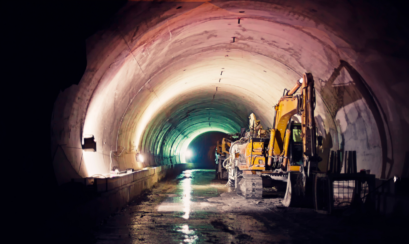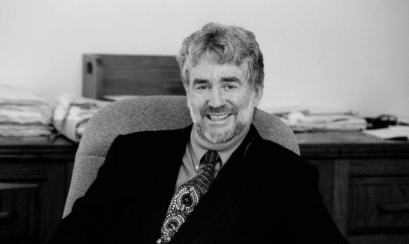The law and science do not always have a lot to do with each other, but sometimes they do intersect. An obvious current example is the intertwining of medical science and the law around the issue of compulsory Covid vaccinations.
However, a rather less obvious intersection is becoming more evident: that of climate change risk and property transactions. In the case of coastal properties threatened by beach erosion, one can readily understand how the risk of rising sea levels could be a factor weighing on the minds of potential purchasers. But there are other categories of property also now seeing an impact. Consider for example regional and rural properties, where value resides not simply in the land, improvements, and location but also in their income-producing potential (and the risk that this potential could be impacted by changes in the climate).
No doubt future climate change risk will increasingly be a factor for the parties to many property transactions, so as lawyers it’s useful to gain a better understanding of the underlying scientific concepts.
The first part of this article looks at some of the underlying scientific concepts relevant to climate change risk. While often unexplained, some of these are well established and proven scientific concepts – the second law of thermodynamics, electromagnetic radiation, the heating and cooling of the ground, and the greenhouse effect. Some remain the subject of at least some scientific debate – human-caused warming, chaos theory and the misuse of statistics.
The second part of this article looks at the many challenges facing Australian property owners and developers as vendors and purchasers of real estate impacted by climate change risk.
Second law of thermodynamics
There are all sorts of ways of stating the second law of thermodynamics, but as good as any is that all physical systems tend toward states of minimum energy. “Entropy” is a word used to describe a state of maximum disorganisation, because energy is required to keep things in some kind of orderly fashion, and this tendency is irreversible in direction: no physical system ever by itself moves in the opposite direction.
A common nineteenth century example ran as follows: if you heat up a cannonball in a fire and then drop it into a barrel of cold water, what happens (apart from a lot of popping and fizzing) is that the cannonball cools and the water heats up, until everything is at the same temperature.
Everyone knows from their own experience that this is true. If you put your cup of hot coffee on your desk and are then called away, when you get back after a sufficiently long time the coffee will be at room temperature. In the process the air in the office will theoretically have warmed a trifle, but even if the office were sealed there would be no practical means of measuring the tiny change.
Electromagnetic radiation
One of the fundamental forces in the universe is electromagnetism. There is a wide range of frequencies, but the relevant bit is visible light and the frequencies either side of it.
On the violet side of the visible spectrum is ultraviolet light. It is shorter in wavelength, and higher in frequency, than visible light. Beyond that are microwaves and X-rays. The shorter the wavelength and the higher the frequency, the more energy. UV radiation inflicts sunburn; X-rays serious damage.
Beyond the red end is infrared radiation: longer in wavelength and lower in frequency. The heat you feel from oil heaters is infrared radiation.
If you took the cannonball out of the barrel when the water had just stopped boiling, it would radiate heat which you could feel but not see. This is infrared radiation, and the physicists call a source of this kind a “black body radiator”, meaning simply that it’s not incandescent.
Heating and cooling of the ground
The sun is a nuclear fusion reactor. It operates at about 6000 degrees Celsius: seriously incandescent. The radiation from the sun is high energy ultraviolet. Because of its short wavelength and high frequency, it passes for the most part straight through the atmosphere without being absorbed by anything. The exception is ozone (O3), which absorbs some UV; hence the concerns about “holes in the ozone layer”.
However, when the UV radiation strikes the surface of the earth, it is eventually absorbed by the soil, which is thus heated up. Because the radiation has passed through the atmosphere unabsorbed, the atmosphere has not warmed up or, more accurately, has not been warmed by the sun.
When the sun goes down, the ground is hotter than the atmosphere. By the second law of thermodynamics, it starts radiating energy back into the now cooler atmosphere. Like the cannonball in the previous example, the ground is a black body radiator, and the radiation it emits is infrared radiation.
The greenhouse effect
While apart from ozone there are no gases in the atmosphere which in any way block UV radiation, there are some which will absorb infrared radiation – known as greenhouse gases. Water vapour and nitrous oxide (N2O) are two, but the ones which are particularly important are carbon dioxide (CO2) and methane (CH4).
The key thing is that molecules of greenhouse gases store some of the energy emitted by the ground as it cools. Thus the system is not a zero-sum system: more energy has been received than has been emitted. This is the underlying mechanism of global warming.
The key take-home message is that if you go to the trouble of demonstrating this experimentally, the effect will be replicated 100% – not 95% or 99% – of the time. In the process of scientific inquiry, showing that something happens 95% of the time is pretty good evidence, even if (as often happens) no-one can actually explain why it happens.
Here, in addition to knowing that the effect happens 100% of the time, we know exactly how and why it happens. We can measure radiation frequency and wavelength. We can measure bond energies in molecules. We know how greenhouse gas molecules absorb the infrared radiation. And we can express all this mathematically.
Human-caused warming
While it would seem there is broad scientific consensus that the level of greenhouse gases in the earth’s atmosphere is rising, there is not universal scientific consensus that this is human-caused and the debate as to the role humanity has and is playing in this regard has become politically charged in recent times. Certainly the vast majority of actively publishing climate scientists – 97 percent by some estimates – do agree that human activity is a cause of climate change.
These climate scientists argue that greenhouse gas emissions into the earth’s atmosphere have increased exponentially in the last 200 years. They point to the fact that while humans have smelted metals for thousands of years, only since the 19th century have they done this on a massive scale. They argue that the Industrial Revolution, bringing with it bridges and battleships made of iron and steel and internal combustion engines, has seen CO2 emissions increase exponentially. They also argue that methane from agriculture is a non-trivial contributor.
Seeds of doubt – chaos theory
Newtonian physics had it that every physical system is 100% predictable, and the reason it appears otherwise is that our experiments can’t be sufficiently controlled or accurate. While Einstein showed that physical systems did not follow Newtonian rules at extremes of scale (galaxies, and the subatomic world) he did not doubt the soundness of the Newtonian rules in day-to-day, Earthly, settings.
However it’s now accepted that Newtonian predictability is also a bit of a myth. While it is not possible to have a full discussion of chaos theory here, you have probably heard of the Butterfly Effect (associated with the 1970s work of physicist Edward Lorenz), which is an aspect of it.
The Earth’s atmosphere is a closed system – if it weren’t, all the atmosphere would likely have drifted off into space billions of years ago and the population would just be anaerobic bacteria.
However, it’s an enormously complex closed system, and identifying cause and effect is incredibly difficult. Chaos theory backs that up.
It’s why even the most committed disciples of global warming acknowledge that a particular flood or bushfire can’t be attributed to a particular event.
Seeds of doubt – misuse of statistics
Benjamin Disraeli famously talked about lies, damn lies, and statistics. People can make statistics say anything they want. Statistically, there are more polar bears in downtown Nome, Alaska, now than ten years ago – but does this support an argument that the planet is cooling or warming?
The magic incantation “statistics show that” preceding any proposition you choose, will have some people believing it. Even in a far less chaotic system than the Earth’s atmosphere, statistics only have validity if the methods comply with clear mathematical parameters. Which is not always the case.
Climate change, fossil fuels and risk
The rational approach is to treat climate change as a matter of risk. The standard risk matrix plots likelihood of an event against the impact of its occurrence. Various risk matrices published by climate scientists, such as by the United Nation’s Intergovernmental Panel on Climate Change, highlight that serious harm from global warming is very likely; maybe inevitable in the absence of action.
While some have cast doubt on these models, even a decent possibility that the predictions are accurate might arguably dictate the taking of some action, because of the catastrophic nature of the events if they do occur. It’s a matter of risk after all.
There is also the argument that fossil fuels are finite. Coal seams aren’t being renewed. Burning fossil fuels does generate pollution in both air and water.
Irrespective of your view on the causes of climate change, it would seem a wide-scale move to renewables has some merit, particularly if as a result the cost of energy can be reduced and its reliability improved. It is no surprise that significant public and private funding is increasingly being thrown at this challenge across the globe.
Impact of climate change risk in Australia
Climate change risk in Australia has been an important issue since the beginning of the twenty first century.
It is generally accepted that the risk to Australia of a warming planet is that parts of the country could become hotter and more prone to extreme heat, bushfires, droughts, floods, severe storms and longer fire seasons, while other parts could experience rainfall decline and dwindling water supplies, or erosion from rising sea levels.
It is these risks that can have an impact on property transactions in Australia.
Rising sea levels and erosion of coastal properties
An obvious and much publicised climate change risk is that of rising sea levels along the coastline of Australia. Certainly we have seen dramatic examples in recent years along the northern beaches of Sydney of property boundaries being eroded by wave action during severe storms, which has highlighted climate change risk to these property owners.
Registered surveyed title boundaries have been washed away and improvements damaged and destroyed, making it harder for some property owners to convey the registered title of their property.
Bushfire risk, zoning and development
Property adjacent to bushland has always been prone to a higher bushfire risk, however local governments are now incorporating climate change risk into zoning restrictions. The level of bushfire risk can affect development requirements – the higher the risk, the more protection you need. The term “Bushfire Attack Level”, or BAL, is used to quantify this risk.
The level of bushfire risk is affected by location, the nature of vegetation, the distance from the vegetation to property, and the nature of the surrounding terrain, and the extent to which that might intensify fire. As part of the build process, you will need to confirm your BAL in a written report. The NSW RFS can help with this step.
There are six bush fire attack levels. BAL-Low is the lowest bush fire risk and Flame Zone is the highest.
Multiple factors create increased insurance risk
Climate change risk is also having an impact on the availability and cost of insurance for some properties. Properties deemed to be affected may be uninsurable or may become uninsurable because of changing risk analysis or planning regulations.
There is anecdotal evidence that some insurance companies are refusing to offer property insurance in villages and towns surrounded by bushland. This may affect properties in the Blue Mountains, on the central coast, in the far northern suburbs of Sydney and the western districts of NSW, west of Tamworth. For some properties where insurance is available, the cost has increased so significantly that some property owners are opting not to take up insurance cover.
Increased pressure on limited water resources
Water resources and storage are also a source of climate change risk. As reports emerge of surface and ground water resources coming under increasing stress in some areas, this is affecting the price of water and the price of properties based on their water entitlements.
Water allocations have been limited in recent times, for example, under the Murray Darling Basin Plan as more water is allocated to rivers and the environment. (For more information please see “Is it legal for me to pump water from the river?” – laws governing water use in NSW.)
Depletion of soil moisture due to rising temperatures
The risk of rising temperatures carries with it the risk for rural property owners of depleted soil moisture and more severe future drought conditions across southeast Australia. Soil moisture affects farm productivity and so this risk too is influencing farmland prices.
While there has been an increase in soil moisture in the western districts of NSW in the last two years due to good rainfall, the Bureau of Meteorology reports a long-term trend in the decline of soil moisture, particularly in the subsoil.
Changes to soil moisture has an impact on land use, such as grazing and crop growing. In some areas, there is a risk that wheat and barley might not be viable crops in future, while in others there is the risk that land used for grazing cattle may no longer be suitable for this purpose.
Transition to alternative power sources can create opportunities
Notwithstanding the challenges, there are opportunities.
Harnessing energy which does not create greenhouse gas emissions would clearly reduce these emissions.
Greenhouse gases such as nitrous oxide, carbon dioxide and sulphur dioxide can also pose risks to health if inhaled over time, especially when it comes to illnesses such as lung disease, heart disease, respiratory conditions and some cancers. A lower level of emissions would improve the quality of the air that many people breathe.
Benefits of alternative energy sources
The installation of solar panels and storage batteries can add to the value of residential, commercial and farming properties and reduce energy dependence.
Diversifying energy supply would reduce Australia’s dependence on imported fuels.
The transition from fossil fuels to alternative energy has the potential to reduce energy costs for consumers and spark economic development and new jobs in manufacturing, installation and infrastructure construction.
Importance of good land management practices for agriculture
For Australian agriculture, adaptation and land management practices can play an important role in building resilience and mitigating climate change risks.
Water and soil conservation can improve water retention, soil quality and increase land values.
Tree conservation and carbon sequestration can also result in financial opportunities, including carbon credits that provide environmental benefits while improving productivity, increasing resilience to a changing climate and preserving or improving property values.
All of these improvements can have economic and health benefits. Buyers of agricultural land, in particular, can achieve a higher level of certainty as to the longer term value of the property they are buying where climate change risk mitigation practices have been adopted.
Everyone stands to gain from understanding climate change
Lawyers acting in land transactions have long been disciplined in “searching” the qualities of the property for things such as easements, encumbrances, planned developments and the like; things which affect the future use and value of property and which are potential risks to buyers. To this we can now add climate change risk.
Having an understanding of the underlying science that impacts climate change can help property buyers and sellers better understand climate change risk and how it might impact their properties, and help lawyers to better advise clients as to the overall risks involved in any property transaction.
For more information, please see Impacts of climate change on our children – is there a duty of care? and Court says coal mines can be approved without considering climate change.
Please see also “Rights of nature” redefining humanity’s place in the natural world.















